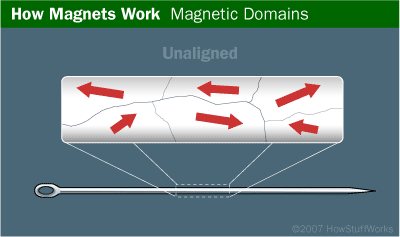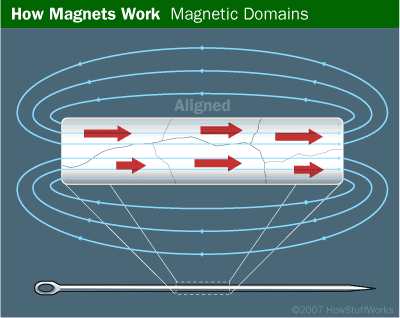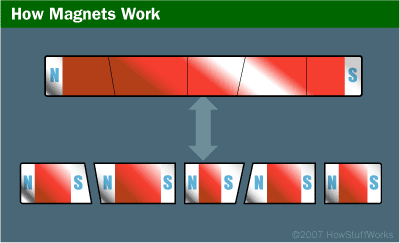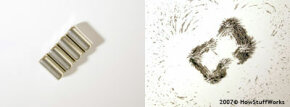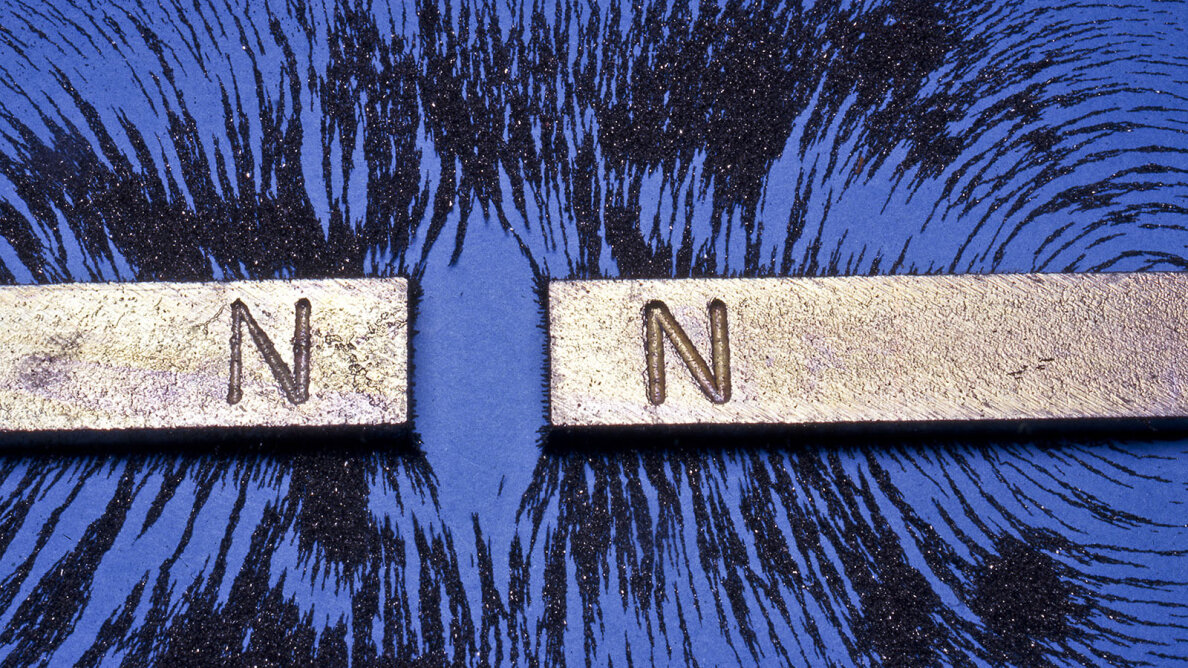
It all started when we went shopping for a magnet for a demonstration on liquid body armor. We wanted to show that a magnetic field could cause certain liquids to behave as solids. Along with the petri dishes and iron filings we needed, the Steve Spangler Science catalog had a neodymium magnet it described as "super strong." We ordered our supplies, hoping that the magnet would be powerful enough to create an effect we could capture on film.
The magnet didn't just transform our iron-and-oil fluid into a solid -- sometimes, its pull on the fluid cracked the petri dish holding it. Once, the magnet unexpectedly flew out of a videographer's hand and into a dish full of dry filings, which required considerable ingenuity to remove. It also adhered itself so firmly to the underside of a metal table that we had to use a pair of locking pliers to retrieve it. When we decided it would be safer to keep the magnet in a pocket between takes, people wound up momentarily stuck to the table, a ladder and the studio door.
Around the office, the magnet became an object of curiosity and the subject of impromptu experiments. Its uncanny strength and its tendency to suddenly and noisily jump from unwary grips to the nearest metal surface got us thinking. We all knew the basics of magnets and magnetism -- magnets attract specific metals, and they have north and south poles. Opposite poles attract each other while like poles repel. Magnetic and electrical fields are related, and magnetism, along with gravity and strong and weak atomic forces, is one of the four fundamental forces in the universe.
But none of those facts led to an answer to our most basic question. What exactly makes a magnet stick to certain metals? By extension, why don't they stick to other metals? Why do they attract or repel each other, depending on their positioning? And what makes neodymium magnets so much stronger than the ceramic magnets we played with as children?
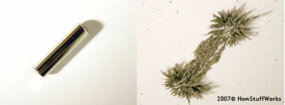
To understand the answers to these questions, it helps to have a basic definition of a magnet. Magnets are objects that produce magnetic fields and attract metals like iron, nickel and cobalt. The magnetic field's lines of force exit the magnet from its north pole and enter its south pole. Permanent or hard magnets create their own magnetic field all the time. Temporary or soft magnets produce magnetic fields while in the presence of a magnetic field and for a short while after exiting the field. Electromagnets produce magnetic fields only when electricity travels through their wire coils.
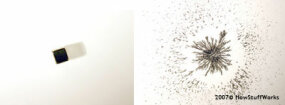
Until recently, all magnets were made from metal elements or alloys. These materials produced magnets of different strengths. For example:
- Ceramic magnets, like the ones used in refrigerator magnets and elementary-school science experiments, contain iron oxide in a ceramic composite. Most ceramic magnets, sometimes known as ferric magnets, aren't particularly strong.
- Alnico magnets are made from aluminum, nickel and cobalt. They're stronger than ceramic magnets, but not as strong as the ones that incorporate a class of elements known as rare-earth metals.
- Neodymium magnets contain iron, boron and the rare-earth element neodymium.
- Samarium cobalt magnets combine cobalt with the rare-earth element samarium. In the past few years, scientists have also discovered magnetic polymers, or plastic magnets. Some of these are flexible and moldable. However, some work only at extremely low temperatures, and others pick up only very lightweight materials, like iron filings.









